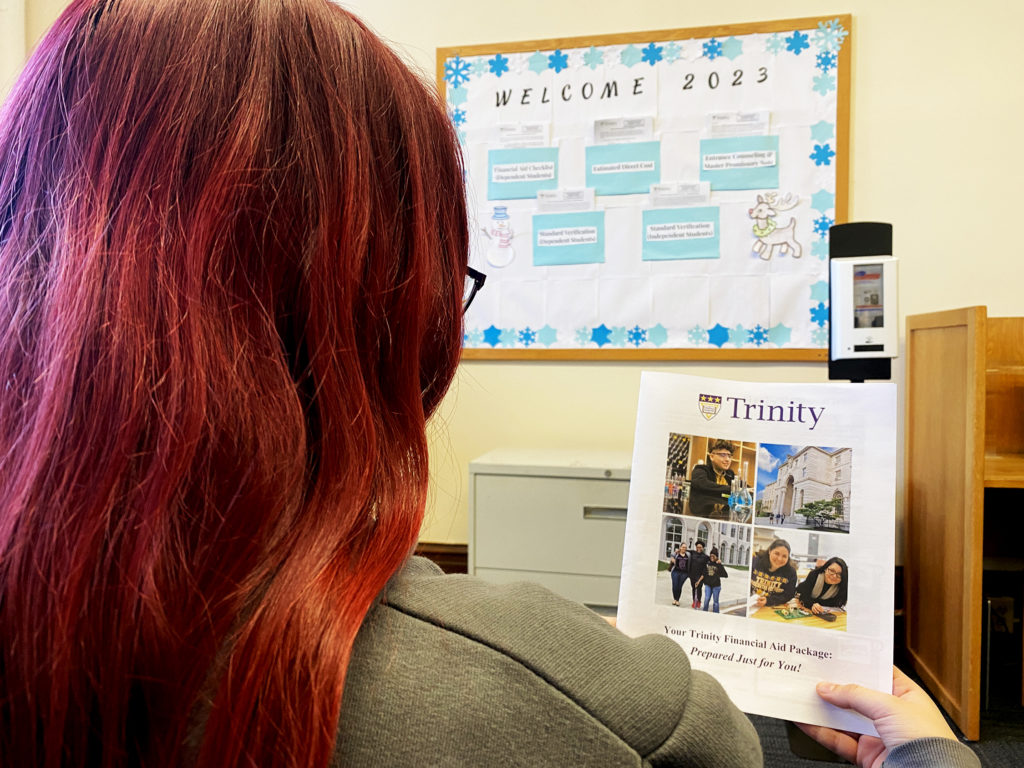
By Timia Hargrove
Trinity Times Correspondent
President Joe Biden announced his student loan forgiveness program in the fall of 2022, a plan that continues to be challenged in the courts.
Students around the country — including those attending Trinity Washington University — could see up to $20,000 erased from their federal student loan debt, if the courts rule the program can go forward.
President Biden rolled out a three-part plan to give qualifying student-loan borrowers some financial breathing room, especially among people struggling with mounting debt during the COVID-19 pandemic.
The program provides targeted debt relief as part of an overall strategy to address rising college costs and to simplify the student loan system for families with children.
Maalik Hawkins is among the many graduate students at Trinity wondering what this all means to him, should the courts allow the program to be implemented.
The plan has several qualifying factors.
A borrower’s income must be less than $125,000 for one person and less than $250,000 for a married couple or head of household during the 2020 or 2021 tax year to qualify for the student loan debt cancellation program.
Adjusted gross income is used to calculate student loan debt cancellation, as opposed to gross or taxable income.
Trinity students and alumni will be able to apply if the plan is enacted.
Undergraduate students at Trinity average $22,000 in debt upon leaving the university and the average graduate student debt is $59,000.
The student-debt relief program has been unfairly criticized by some politicians, journalists, and pundits, said Trinity President Pat McGuire in a September 2022 blog post.
McGuire said they are “ignoring the fact that the majority of borrowers suffering under oppressive levels of student loan debt are women of modest means, and particularly Black women who carry the highest student loan debt in the country — and who suffer chronic race and gender discrimination in employment, meaning that even if they are hired into major for-profit corporations, their earnings are likely to be far less than white men.
“Often, women and women of color pursue degrees so that they can work in modestly paid licensed professions (such) as teachers, counselors, social workers and healthcare professionals,” she said. “For too many borrowers, the student loan system winds up adding debt to their pile through mounting interest rates over time, compounding the cost of the loans and making it impossible to borrow for other life needs, such as buying a home or a new car.”
Since the program is currently on hold, Trinity students like Hawkins are wondering what this means to potentially eligible people still struggling with their student loans.
Since March 2020, Presidents Donald Trump and Biden have repeatedly extended a moratorium on making federal student loan payments, including freezing interest and suspending collection efforts. It has been extended until June 30, 2023.
Some other loan forgiveness and relief programs remain available to borrowers while Biden’s one-time student loan cancellation program makes its way through the courts.
There are three other types of loan forgiveness, including Public Service Loan Forgiveness, Modified IDR Account Adjustment, Borrower’s Defense of Repayment, and Disability Forgiveness. The government is working on a new income-driven repayment scheme to ease the burden on borrowers next year.